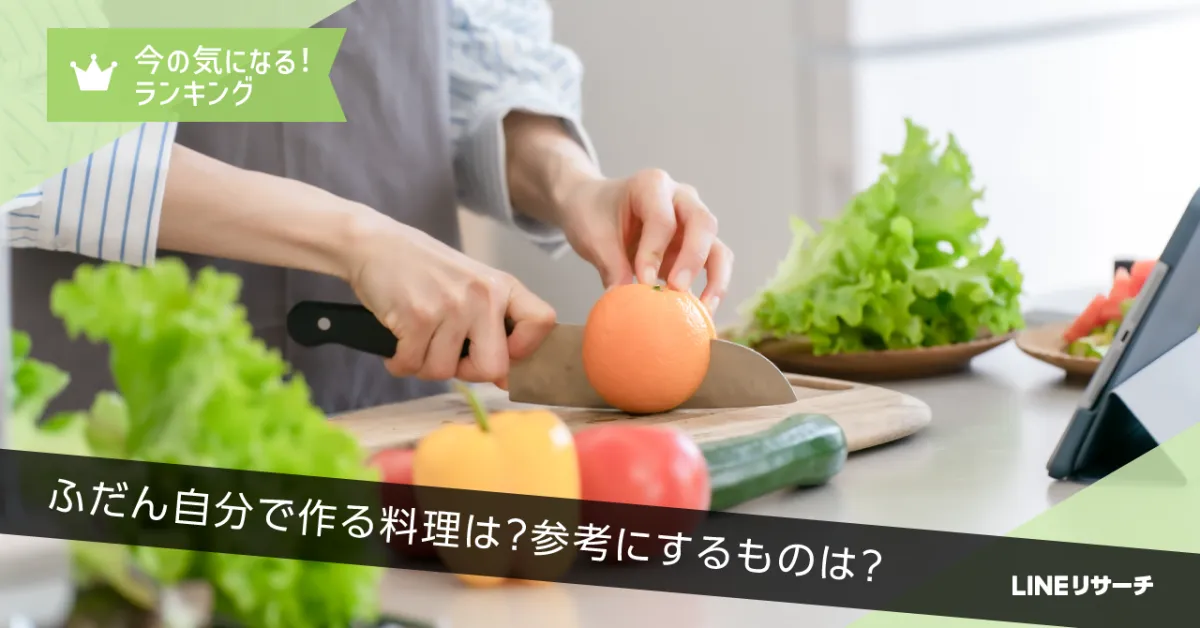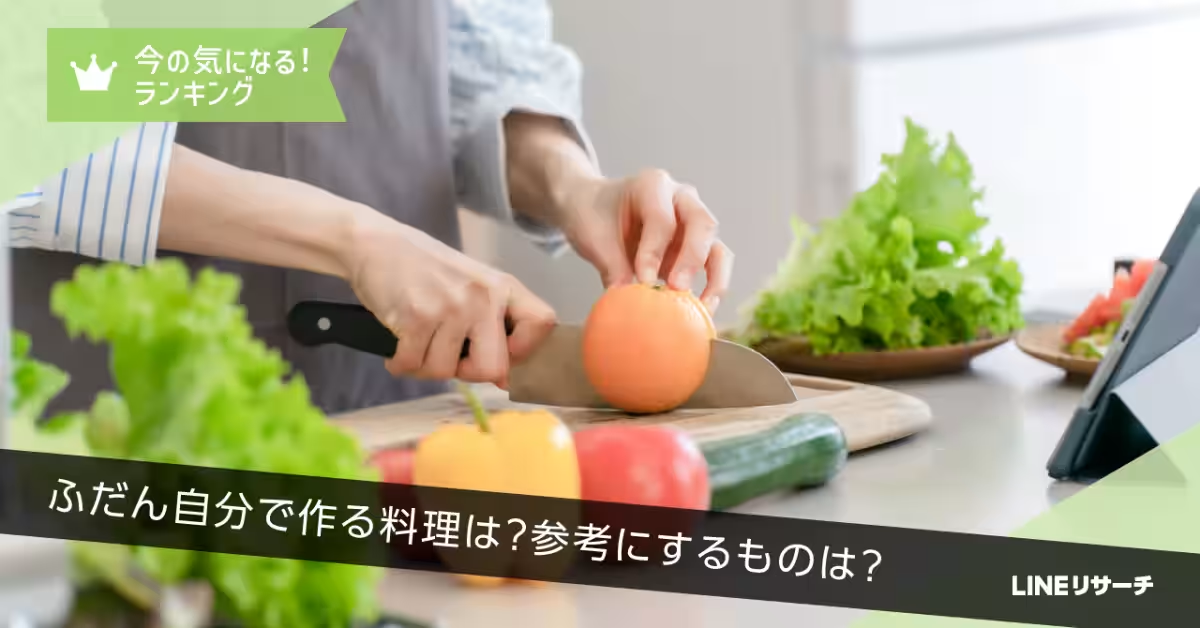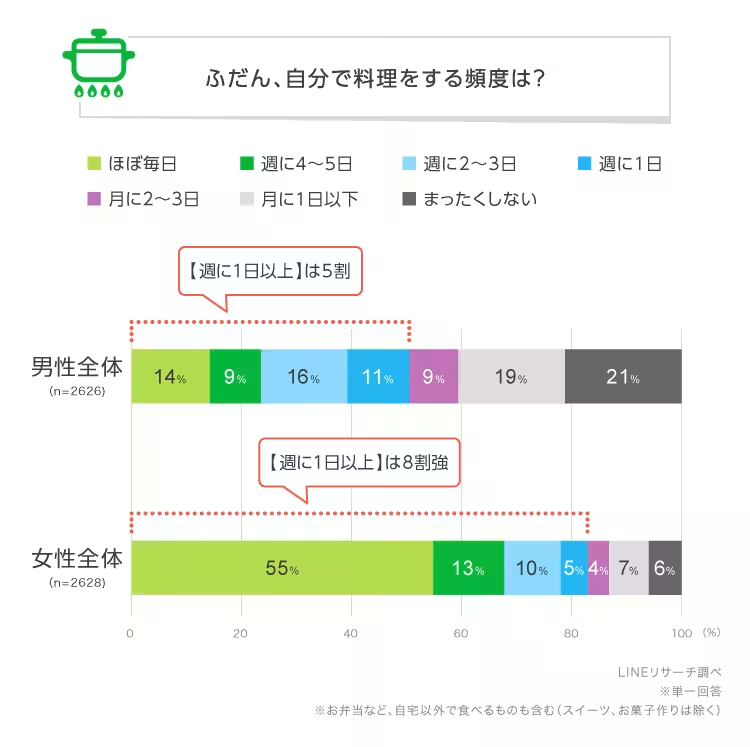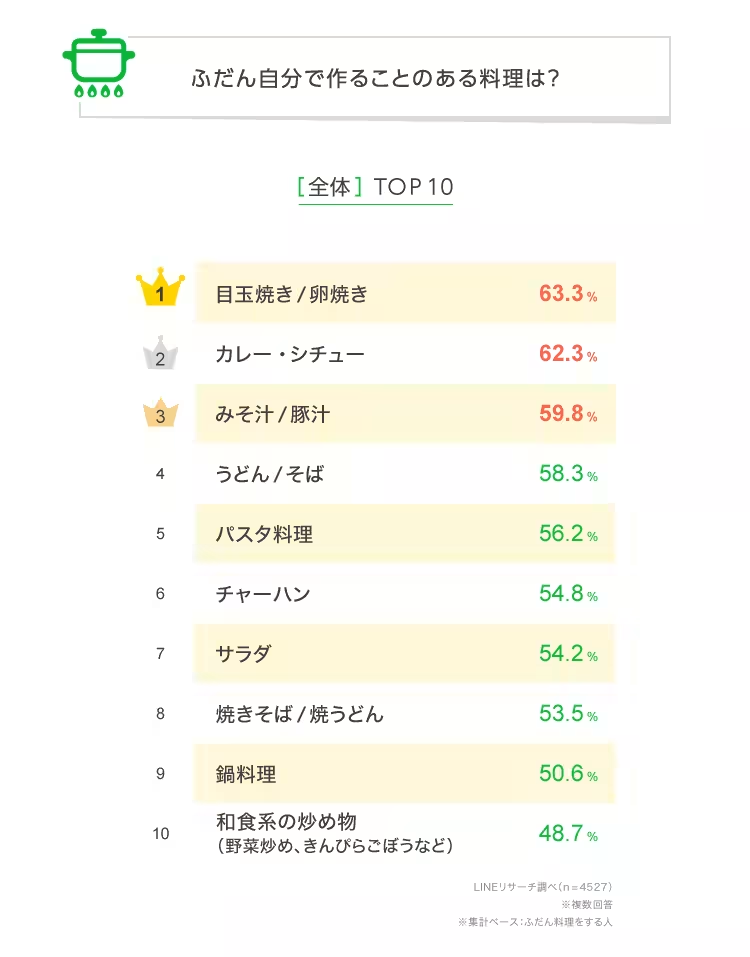

Cooking Preferences and Recipe Sources: Insights from LINE Research
Insights on Japanese Cooking Preferences
LINE Research has conducted a comprehensive study targeting Japanese individuals aged 10 to 60, revealing fascinating insights into cooking habits and recipe sources. As a leading smartphone-based research platform, LINE aims to provide valuable data based on responses from over 7 million active panelists across the nation.
Cooking Frequency and Preferences
The survey results demonstrate that around 60% of participants cook at least once a week, a notable trend among various age groups. Specifically, the frequency of cooking aligns closely with gender, where women tend to cook more often compared to men—highlighting that nearly half of male respondents still prepare meals regularly. Notably, cooking frequency increases with age, indicating a stronger engagement in culinary activities among older generations.
When asked about the types of dishes they typically prepare, respondents overwhelmingly favored 'fried eggs/omelets' and 'curry/stew,' each enjoyed by more than 60% of the participants. Other popular options included 'miso soup,' 'stews,' and various noodle dishes like 'soba' and 'pasta.' Interestingly, while women often represented higher percentages in cooking preference categories, the love for 'ramen' showcased equal enthusiasm between both genders.
Younger generations in their teens and twenties displayed less engagement in cooking overall, but among those who do, 'fried eggs/omelets' and 'pasta' were particularly frequent selections. Geographically, participants from Hokkaido displayed a heightened tendency towards preparing 'curry/stew' and 'miso soup,' distinguishing their regional culinary identity.
Sources of Culinary Inspiration
In terms of recipe inspiration, over 60% of individuals reportedly turn to 'recipe sites/apps,' making it the leading choice amongst all age demographics. Following closely behind are platforms such as YouTube, e-recipe books, and even social networks like Instagram. The reliance on these sources significantly boosts cooking creativity, especially within women aged 20 to 50, where up to 70% indicated preference for online resources.
YouTube emerged as a favored tool among younger respondents, particularly those in their teens, highlighting a growing trend of culinary influence from visual media. Meanwhile, the younger generations also showed a solid inclination towards gaining advice from friends and family— a trait that diminishes as one ages, where traditional recipe books and media sources such as TV take precedence.
Undertones of the Survey
The LINE Research survey sheds light on the evolving landscape of cooking and how digital mediums are reshaping culinary habits. It emphasizes the importance of learning from various platforms and how they complement traditional cooking practices. With a sample size of 5254 individuals, the survey captures a diverse array of insights, reflecting contemporary cooking trends across Japan.
As we continue to navigate an increasingly complex culinary environment, understanding these preferences can significantly aid chefs, marketers, and recipe developers alike. For more detailed results, visit the LINE Research media page for further analysis.
For more insights and the latest research updates, check LINE Research's official website.
LINE Research Official Site




Topics Consumer Products & Retail)










【About Using Articles】
You can freely use the title and article content by linking to the page where the article is posted.
※ Images cannot be used.
【About Links】
Links are free to use.